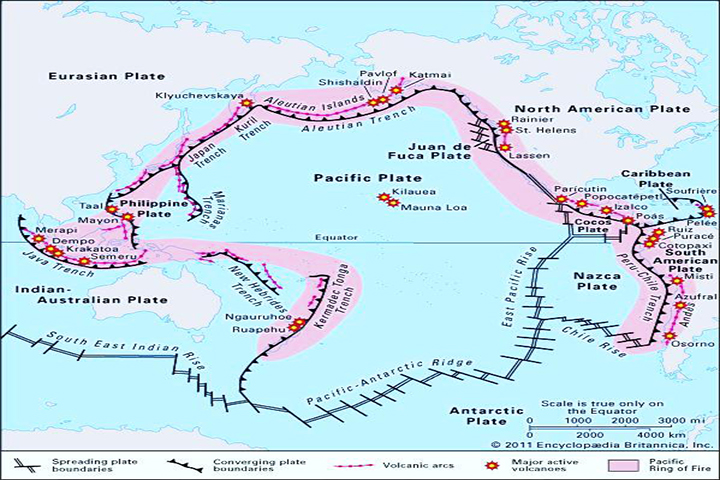
MANILA -- The Pacific Ring of Fire is "active," warned the United Nations Office for Disaster Risk Reduction (UNISDR) in a tweet last Tuesday, Jan. 23.
The warning came, as a series of volcanic eruptions and earthquakes takes place across the Asian continent and even Alaska, including the continuous spewing of lava by the Philippines' scenic Mayon Volcano in Albay province.
Overseas, the Mt. Kusatsu-Shirane Volcano in Japan has caused an avalanche. Within the same week, a 5.3-magnitude earthquake jolted Indonesia, and a 7.9 magnitude earthquake in Alaska led to a tsunami alert.
It's normal
Despite the UN warning, scientists across the globe say these recent geologic activities are normal.
The Philippine Institute of Volcanology and Seismology (Phivolcs) assured that the recent earthquakes and eruptions are common, as the activities of the arch have always been active.
In a phone interview with the Philippine News Agency (PNA) on Thursday, Phivolcs geologist Robelyn Mangahas said the tectonic plates within the so-called Pacific Ring of Fire "move every year." Its movement caused both earthquakes and volcanic eruptions, she said.
Mangahas added the recent events were not "triggered by one and the other."
Geology expert Chris Elders from Curtin University in Australia also said the recent activity was entirely normal, according to a report from the BBC News.
Elders explained there was no relationship between the different earthquakes and volcanic eruptions, noting they were just occurring at the same time.
Elders further pointed out volcanic and tectonic activities had been occurring in the region for "hundreds and thousands of years."
In the same BBC report, New Zealand volcanologist Janine Krippner was quoted as saying the zone was "not referred to as the Ring of Fire because it sits there doing nothing."
She added the rate of eruptions had not recently increased.
A closer look at the ring
The Pacific Ring of Fire is an arch surrounding the Pacific Ocean, where 75 percent of the world's volcanoes are located and 90 percent of earthquakes occur.
The area, which spans 40,000-kilometer long, is home to most of the globe's earthquakes, 452 volcanoes, and the deepest ocean trench called Mariana, located in Guam.
The arch consists of many meeting points of different tectonic plates, which include the Philippine, Eurasian, North American, Juan de Fuca, Cocos, Caribbean, Nazca, Antartic, Indian, Australian, and other smaller plates.
These activities, however, are not surprising. The area has seen the strongest recorded earthquake and the strongest volcanic eruption recorded in history so far. These are the 9.5-magnitude quake in Valdivia, Chile in 1960 and the Mount Tambora eruption in Indonesia in 1815. (PNA)
